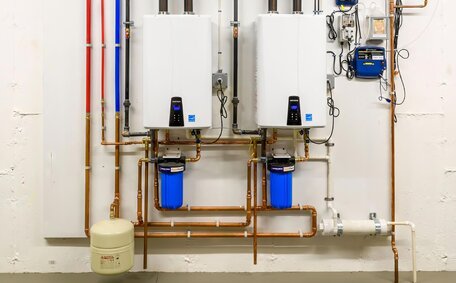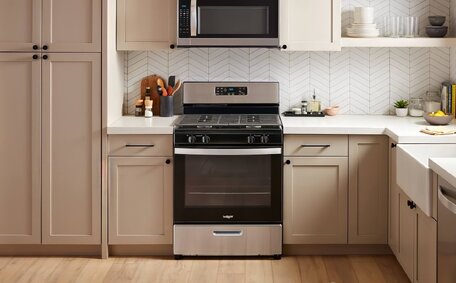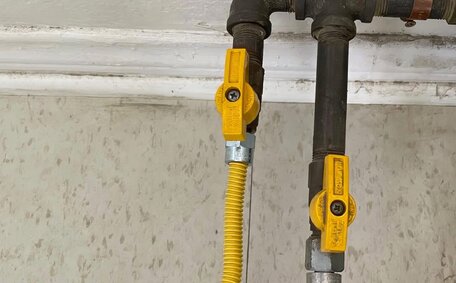
How Hard Water Hurts Hot Water Heaters
Hard water leaves mineral deposits in heaters, pipes and tanks. This limescale reduces efficiency, lifespan and hot water availability. Contact us for affordable water softening solutions.
Read MorePipe relining offers a no-dig solution to repair internal pipe damage, serving as an efficient alternative to traditional excavation. Pipe relining refreshes pipelines by inserting a resin-soaked liner with an epoxy coating into the current pipe, which then hardens in place, creating a new pipe section.
The typical pipe relining process involves:
Cured-In-Place Pipe (CIPP) relining is designed to extend the life of your infrastructure, repairing various types of damage and substantially enhancing pipe longevity. It’s effective for reinforcing wastewater, storm water, fire suppression lines, service lines, and reinforcing against lead pipe deterioration, up to 36 inches in diameter. Technologies like NuFlow’s potable water relining, which include an epoxy coating, are specially designed for drinking water use.
The resin-saturated liner forms a jointless, watertight new pipe, reinforcing service lines and able to withstand pressure, resist corrosion, and prevent future leaks. Relined pipes, which can be installed seamlessly within your existing infrastructure, ensure the integrity of your potable water lines, adhering to health and safety standards.
Pipe relining, a trenchless technique, typically involves a composite resin—a thermoset plastic that solidifies to create a robust pipe lining. A mix of epoxy resin, fibres, and fillers creates a durable interior liner that withstands pressure and stops corrosion.
Common epoxy resins used in potable water relining include:
In Australia, NSF/ANSI 61 compliant materials are certified safe for drinking water contact.
Proper pipe lining installation is vital to ensure that relining materials safely isolate the water main from the old pipe surface. Once fully cured, high-grade epoxy resins form a non-toxic barrier inside drinking water pipes.
In pipe relining for drinking water, evaluating material safety is crucial. One potential concern is the leaching of Bisphenol A (BPA) from some epoxy resin linings when exposed to hot water. Studies have shown concentrations up to 23.5 μg/L, exceeding the recommended 0.10 μg/L limit.
However, technologies like Greeline utilise advanced resin materials rigorously tested and certified for water line safety to NSF/ANSI 61 guidelines. Their unique direct pipe connection and leak protection also minimises contamination risks and have been used pipe to enhance water system integrity. Expert installation and thorough curing processes are essential to prevent leaching.
Complying with national and international potable water safety standards ensures relined pipes pose no significant health risks. Utilising superior materials fit for copper pipes and engaging proficient contractors assure that relining can safely restore pipes, thus fostering public health for years to come.
When relining pipes intended for potable water use, it is crucial that certified non-toxic materials are used. In Australia, the Watermark Certification Scheme sets stringent guidelines for products that contact drinking water to ensure public health and safety.
To receive Watermark certification, materials we needed to be vetted across areas like product safety, materials evaluation, quality assurance in production, and conformity assessment. Specific criteria include:
One of the key benefits pipe relining offers is maintaining potable water quality by insisting on NSF/ANSI 61 certified relining products. This American standard sets restrictions on surface coatings and components for water system safety. Certified products for use in water mains must ensure there no leaching of lead, volatile organics, or other toxic substances exceeding strict public health limits.
When engaging relining services, consumers should always verify these certifications. Selecting certified non-hazardous products helps buffer your pipe system against potential infrastructure damage, ensuring safe delivery of potable water for decades.
Before using relined pipes to transport drinking water, it is important to test the water quality to check for potential contaminants. Professional testing should be conducted after pipe relining installation is complete to validate health and safety.
Common tests include:
Laboratories employ sophisticated tools such as gas chromatography-mass spectrometry (GC-MS) to identify volatile organic compounds with parts per billion precision.
Testing parameters are guided by health directives like the ADWG and standards such as NSF/ANSI 61. Passing rigorous contamination testing ensures relined pipes meet stringent safety guidelines for potable water delivery.
It’s advisable for consumers to ask for water quality reports from technicians following the relining procedure. Professional testing offers peace of mind that your relined drinking water pipes are fully safe for use.
Pipe relining frequently offers advantages over traditional pipe replacement, including:
However, full cured-in-place pipe replacement may be unavoidable when addressing severely broken pipe issues. Replacement also allows altering pipe routes and upgrading capacities if required.
For residential properties, pipe relining rejuvenates plumbing and drainage systems more rapidly, affordably, and with less disturbance than traditional replacement.
CIPP relining is an economical, trenchless option perfectly suited for refurbishing industrial pipes, ensuring better structural strength and longer service life.
To guarantee the ongoing safety and efficient performance of relined pipes, our technicians advocate a comprehensive regime of regular inspections and diligent maintenance.
Homeowners must regularly inspect relined pipes to identify potential issues like:
If issues are detected, a licenced plumber should be consulted to inspect the relined pipes. They can pinpoint the cause and remedy it if needed.
Over time, relined pipes may still build up mineral deposits or have small liner breaches. To keep them working safely long-term:
Appropriate maintenance safeguards your trenchless pipe rehabilitation investment and ensures continued safe operation. By adhering to local public health directives for potable water systems, property owners can trust that relined pipes will deliver safe drinking water for many years.
Opting for our Nu Flow-certified technicians translates to leveraging years of expertise in pipe relining. Routine care of properly installed epoxy liners allows residential and commercial sites to avoid pipe failures and enjoy clean, contaminant-free water.
When considering pipe relining, it’s important to ask your plumber key questions, including:
Proficient plumbers will readily share detailed information about their relining expertise, materials, and processes. By Asking about certifications, potable water safety testing and long-term performance can help you feel confident your relined pipes will provide quality drinking water for decades.
Engaging our team of Nu Flow-certified professionals ensures that your property’s pipe systems will be expertly managed to meet stringent health standards. Don’t hesitate to start a dialogue and learn more about how trenchless pipe restoration can effectively rehabilitate your plumbing system.
Hard water leaves mineral deposits in heaters, pipes and tanks. This limescale reduces efficiency, lifespan and hot water availability. Contact us for affordable water softening solutions.
Read MoreIt’s important to routinely check your gas appliances for any issues. Signs of problems include gas leaks, strange sounds, odd smells and more. Have a professional inspect your gas appliances annually and service them regularly for safety.
Read MoreUpgrading your gas meter is a simple process completed by registered technicians. It involves disconnecting your gas supply for 15 minutes to swap the old meter for a new digital smart meter. The upgrade is free and improves accuracy.
Read MorePicnic Point, 2213 NSW
We will call back as soon as possible.




